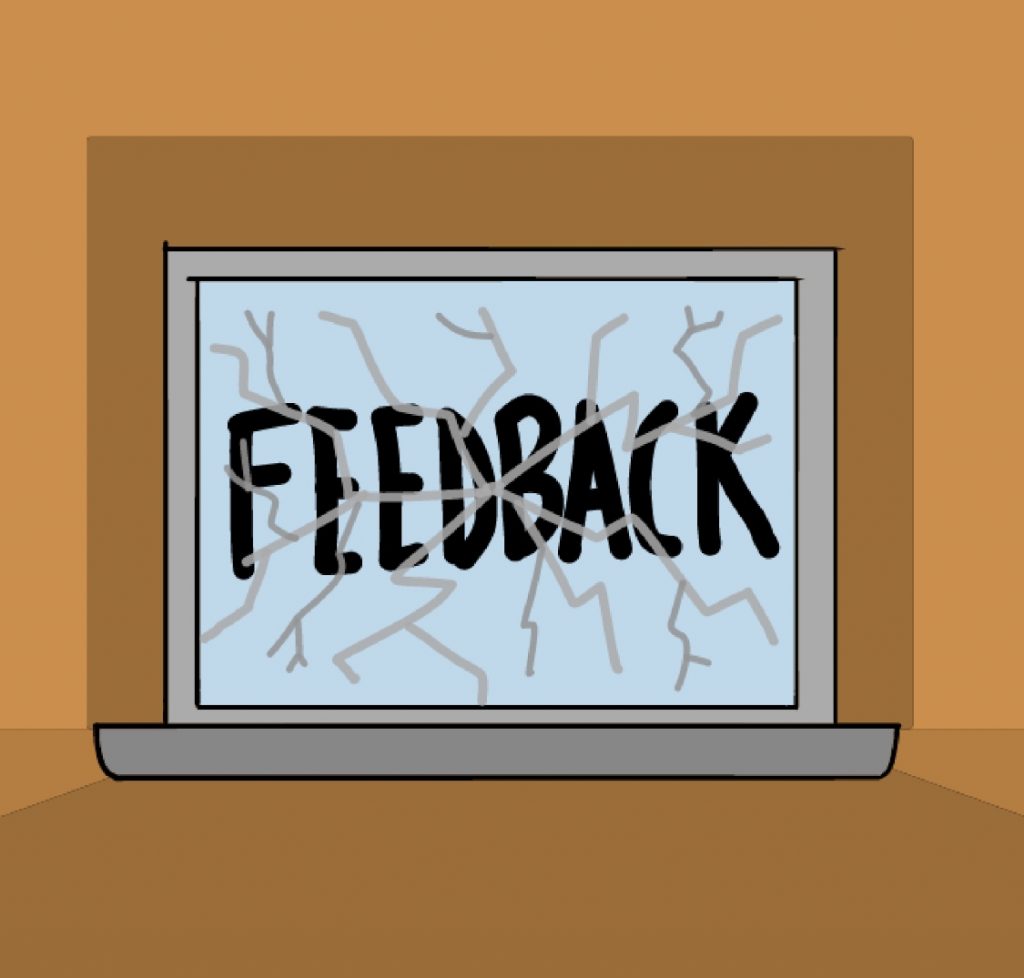
Illustration by Andrew Lam
The necessity of constructive feedback from students
Due to online learning, many teachers are unable to gauge whether students are following their lectures during class. Not only is it rare for students to actively speak up to teachers about their teaching methods, they are also unable to give visual reactions with their cameras off. Because of this, teachers need to welcome authentic feedback from students to have a clearer understanding of how they can improve, and students must also partake in bettering their learning experience.
Teachers have different teaching styles that can create discrepancies in feedback from colleagues. In a TED Talk by Bill Gates, he says, 98% of teachers usually receive “satisfactory work” or “good job” as feedback from their peers and administration. This does not aid teachers at all. Feedback is meant to be a suggestion that teachers use to improve. If teachers do not receive genuine, constructive criticism, then they are likely to assume what they are doing is acceptable and would not know what they need to modify to best meet students’ needs when learning. Feedback that is completed as a gesture of being courteous is unproductive.
Students frequently complain about classes being too difficult to understand, but they rarely voice this concern to teachers. This is especially true in AP classes, where teachers often teach at a sped-up pace or homework is conceptually challenging. Students are the best source of feedback because they are the ones learning. If they are not properly giving feedback to teachers about the class, teachers do not know what needs to change. If student feedback is available, teachers can address these comments so students are better prepared and on track for class lessons. If concerns arise, it is up to students to communicate with teachers in order to get their voices heard, as teachers are unable to read their minds to accomodate to them.
Some people may point out that teachers giving each other feedback is more than enough and believe students are too young to provide substantial feedback. Since distance learning is completely new for teachers, student input is crucial. Students are the ones attending the class, so they have first-hand experience in knowing what works and does not work. Only through processes of trial and error of adjusting after receiving feedback will teachers be able to tweak their teaching to best cater to students. Including and inviting student perspectives is more essential now than ever, as their own education is at stake.
To ensure quality feedback, teachers can have students fill out anonymous digital forms and polls about what they find difficult and how teachers can improve the way they are educating students. Not only are digital forms and polls quick to complete, they can also allow teachers to have an understanding of what each individual student is struggling with and what they can refine to make the class more comprehensible. Teachers can ask students during Zoom meetings if students feel they are moving through the lecture too fast, in which they can private message teachers. Furthermore, speeding or slowing down lectures can be included in the anonymous digital forms and polls too.